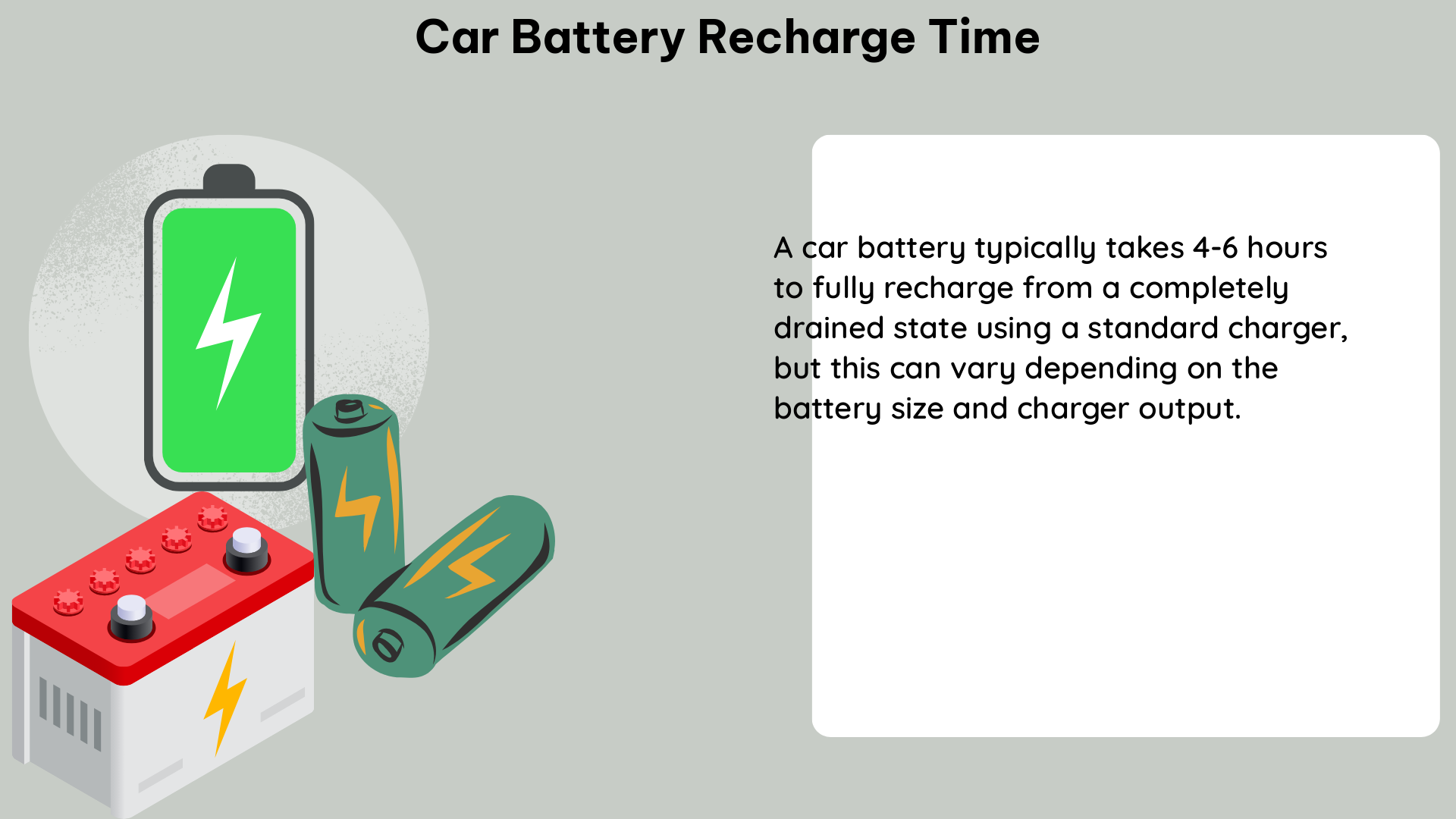Car batteries can lose their charge due to various reasons, such as infrequent use, extreme temperatures, or a faulty charging system. Recharging a car battery is a common practice, but it requires a proper understanding of the recharge time, factors affecting it, and the technical specifications involved. This article provides a detailed analysis of the car battery recharge time, technical specifications, and a DIY guide.
Measurable and Quantifiable Data on Car Battery Recharge Time
The time taken to recharge a car battery depends on several factors, including the battery’s capacity, the charging current, and the charger’s efficiency. The following data points and measurements provide a clearer picture of the car battery recharge time:
- A typical car battery has a capacity of around 40-80 Ah (Ampere-hours).
- A 40 Ah car battery, when completely drained, would require 40 Ah of charge to be fully recharged.
- A 10-24 hour timeframe is estimated for charging a car battery using a smart charger.
- Driving at highway speeds for about four to eight hours can charge a car battery, but it will never reach 100% while driving.
- The alternator’s output is typically around 50-100 amps, and it takes about 10-24 hours to charge a car battery fully with a trickle charger.
- When recharging an AGM battery, you might need to drive for longer than 20 minutes since most vehicles have too low of a charging voltage for them.
- A 12V car battery with a capacity of 60 Ah, when completely drained, would require approximately 6-12 hours to fully recharge using a 6-12 Amp smart charger.
- The recharge time can be reduced by using a higher-amperage charger, but it’s essential to ensure the charger is compatible with the battery’s specifications to avoid damage.
- Extreme temperatures, either hot or cold, can significantly impact the recharge time, with colder temperatures slowing the process and hotter temperatures potentially causing the battery to overcharge.
Technical Specifications of Car Battery Recharge Time

The technical specifications of car battery recharge time involve understanding the charging process, the types of chargers, and the factors affecting the recharge time.
Charging Process
The charging process involves three stages:
- Bulk Charging: The initial stage where the charger supplies a high current to the battery to quickly restore its charge.
- Absorption Charging: The second stage where the charger reduces the current and maintains a constant voltage to ensure the battery reaches its full capacity.
- Float Charging: The final stage where the charger maintains a low current to keep the battery at its fully charged state.
Types of Chargers
There are two main types of chargers:
- Smart Chargers: These are more efficient and can automatically adjust the charging current based on the battery’s needs.
- Trickle Chargers: These supply a constant low current to maintain the battery’s charge.
Factors Affecting Recharge Time
Several factors affect the car battery recharge time, including:
- Battery Capacity: The higher the battery capacity, the longer it will take to recharge.
- Charging Current: The higher the charging current, the faster the recharge time, but it’s essential to ensure the charger is compatible with the battery.
- Charger Efficiency: More efficient chargers can recharge the battery faster than less efficient ones.
- Battery Age and Health: Older or damaged batteries may take longer to recharge or may not be able to hold a full charge.
- Ambient Temperature: Extreme temperatures, either hot or cold, can significantly impact the recharge time.
DIY Guide to Recharging a Car Battery
Recharging a car battery can be done at home using a battery charger. Here’s a step-by-step guide to recharging a car battery:
- Ensure the battery is in a well-ventilated area and the charger is unplugged.
- Connect the charger to the battery, ensuring the positive (red) cable is connected to the positive terminal and the negative (black) cable is connected to the negative terminal.
- Set the charging voltage and current based on the battery’s specifications. For a 12V car battery, the typical charging voltage should be around 14.2-14.6V, and the charging current should be between 6-12 Amps.
- Plug in the charger and monitor the charging process. Most smart chargers will have indicators or displays that show the charging status and when the battery is fully charged.
- Once the battery is fully charged, disconnect the charger and ensure the battery terminals are clean and tight.
Remember, it’s essential to follow the manufacturer’s instructions for your specific battery and charger to ensure a safe and effective recharging process.
References:
– Recharging Car-Type Batteries When You Have Lots of Time
– RPM and Duration to Recharge a Battery
– EV Battery Health: How Long Can an Electric Vehicle Battery Last?
– How Long You Have to Drive to Charge Your Car Battery
– How long should I drive for to re-energize the battery?

The lambdageeks.com Core SME Team is a group of experienced subject matter experts from diverse scientific and technical fields including Physics, Chemistry, Technology,Electronics & Electrical Engineering, Automotive, Mechanical Engineering. Our team collaborates to create high-quality, well-researched articles on a wide range of science and technology topics for the lambdageeks.com website.
All Our Senior SME are having more than 7 Years of experience in the respective fields . They are either Working Industry Professionals or assocaited With different Universities. Refer Our Authors Page to get to know About our Core SMEs.